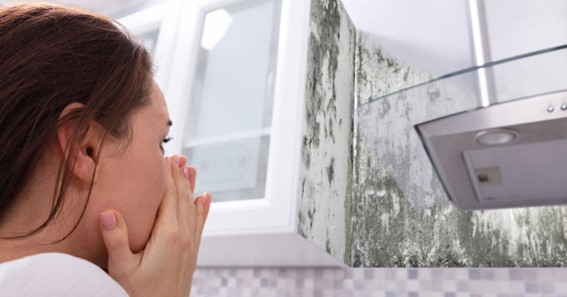Mold is a terrible thing to have growing in your house. You may notice the musty smell before anything else, but it’s usually one of those signs that tell you there’s mold somewhere nearby and ready for harvest.
It sounds like you’ve never smelled mold before. You might not know what it smells like, but that weird odor in your room could be from toxic growths or dirty laundry. In this article we will break down the different types of molds and their respective smells so there’s no guessing game when trying to identify where things come from around here or anywhere for that matter.
Certified mold experts usually claim that mold has a musty or earthy smell. But what exactly causes this distinctive odor? One possible explanation is that mold emits volatile organic compounds (VOCs). These VOCs can interact with each other to create unique smells.
Another possibility is that the mold itself has a musty or earthy smell. This is often the case with older, more established colonies of mold.
Click here – Is It Hard To Use A Katana – This A Complete Guide For You!
What Causes Mold to Smell?
These byproducts of fungal metabolism make up the mold smell you can’t get rid of.
Mold produces different types and combinations of VOCs, which are gaseous molecules that come from bacteria or other microorganisms like fungi in an enclosed area where food sources exist for them to feed on.
The more focused these molds grow under ideal conditions with no competition typically found inside homes-the stronger their stench will be when releasing this kind of gas because there isn’t anything stopping its release at that point.
The list of compounds that have been identified as mVOCs is extensive. It ranges from the pungent, metallic smells associated with aldehydes such as formaldehyde and phenol all the way down to sweet fruity esters like ethyl vanillin found in bananas or ripening barnyard animals respectively.
There are also strong smelling chemicals such carboxylic acids which can be sour depending upon their position within a molecule. Ketones contain functional groups enabling them to function either donor or acceptor type characters at different points during metabolism.
Molds are everywhere, so it’s no surprise that they would produce chemicals with unique smells. Some of these odors have been described as musty or even leather-like; others might remind you more of dirt than anything else.
What is the Smell of Mold?
Mold, with its musty and stale odor reminiscent of old socks or an attic that has not been aired out in months, can be found anywhere from the dirt underneath leaves on a forest floor all too quickly when it starts growing faster than you could delete them; even inside your home. Mold is something that attic mold removal companies deal with regularly on a daily basis.
It’s hard to see sometimes because of lights shining through windows onto surfaces covered by fungus growths but there are ways for us humans who want our homes free of this pesky thing called “mold.”
The smell of mold is usually quite pronounced and can be very unpleasant. The musty odor comes from a hodgepodge mix in which mVOCs are released into the air as it grows, giving off this particular type or stench that we know so well.
Mold is a tricky thing to deal with. It can be musty and earthy, or produce notes of dampness in your home’s air but it doesn’t stop there. Molds need excess moisture which often comes from water damaged materials for growth so you’ll usually smell them alongside any other type of scent caused by this fungus-like organism.
Mold will also lead an array life attaching itself onto surfaces such as wood furniture; drywall walls carpets etc., which leads us into our next point about danger. Grooming a bathroom is never an easy task, but it becomes exponentially more difficult when you have to deal with mold.
The most typical type found growing between showers tiles don’t typically smell like rot; however severe growth on walls and ceilings especially after flooding or leakages may make your room reek of fermented cheese.
Click here – The Benefits of Healthy Relationships
Moldy Odors
Mold is the most common indoor air quality problem that leads to strange malodors in your home, there may be other suspects as well. Here are some other household smells that might cause you confusion for what’s wrong with them
The list of possible causes for bad smells in your house is extensive. You might suspect that there’s something wrong with:
Laundry detergent, fabric softener or dryer sheets; garbage disposal unit; cooking oils and greasy foods like French fries/chili con carne; pet accidents especially if you live with a dog who loves to chew on everything under his nose.
But it could also come from natural gas leaks as well HVAC problems such as Malaise triggered by poor airflow through home. You can use air purifiers to remove that musty or moldy odors from homes too.
How to Know if You Have Mold?
The one way to be certain that you have a mold problem is by finding the source. If it’s located somewhere where there isn’t easy access, then we may never know what causes those unpleasant odors in our homes.
Furthermore, here are some popular indications or risk factors of mold:
You have been experiencing water-related problems recently e.g., floods, leaks and humidity. You or your loved ones may also be showing symptoms of mold exposure such as allergy-like responses while indoors; sneezing etcetera.
You could potentially experience serious health hazards due to this problem if left unchecked.
You might notice a strong smell in your home if you have mold growing on the walls. This can come from air conditioning units, which are often found near windows that get lots of natural light but not much ventilation; they’re also easy targets for moisture buildup because these systems rely so heavily upon electricity.
You have been using your humidifier constantly. It’s possible that you live in an unoccupied new home due to storage problems, insulation installation or construction practices done on site without proper ventilation.






